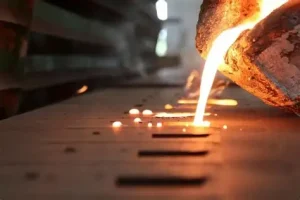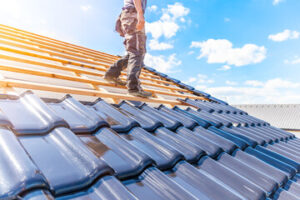Metal Fabrication Boise Idaho industry is a bit like the printing industry. You’ll see their work all around you, from door latches to railings and hangers.

However, the industry faces several challenges including rising material prices and a shortage of skilled workers to operate complex machinery. To address these issues, fabricators are getting creative.
The metal fabrication industry relies on a lot of different tools and techniques. From computer-aided design (CAD) software to laser cutting and waterjet cutting, there is no shortage of technology used in the modern metal fabrication shop. These tools make work safer, faster, and more accurate. They also allow companies to run their businesses more efficiently and reduce overhead.
The fabrication industry has also gone green in recent years, as companies have found ways to cut down on waste and use less harmful chemicals. Many shops now recycle their scraps and use renewable energy to power their machines. Some are even working with robots that can take on dangerous tasks that require high precision.
When a customer comes in with a custom project, the fabricator uses CAD software to create the product’s blueprint. Then, engineers analyze the design to ensure it is feasible and safe to produce. This involves calculating the materials needed, making sure the dimensions are correct, and troubleshooting any potential problems that could arise during production.
Once the product is designed, the fabricator can start the process of building it. This may involve a number of different processes, such as shearing, punching, and forming. Shearing involves cutting metal with a blade or shear to remove material. The resulting piece is often smooth and uniform in shape. Forming involves pushing the metal to create a specific shape. This can be done using heat, a press, or a machine.
Depending on the project, the metal fabricator may need to weld the parts together. They may also need to add additional features like doors, windows, and shelves. In addition to these steps, the fabricator must account for shipping costs and assembly time when calculating their final cost. One major issue facing the fabrication industry is the skilled labor shortage. Some shops are working with local schools to set up training programs for new workers. Others are using virtual reality to teach employees how to operate equipment safely and accurately.
Materials
Fabricators work with a wide variety of materials, including pure metals like steel and aluminum and more complex alloys. These have unique properties that make them suitable for different applications. For example, stainless steel can resist corrosion, while copper is highly conductive. Choosing the right material for a fabrication project depends on a lot of factors, including the intended use of the finished product and the level of precision required.
Cutting is the process of breaking down a metal workpiece into smaller pieces using a variety of tools and machines, including power saws and waterjet cutters. It is often the first step in metal fabrication and can be done on both flat and curved parts.
Another important aspect of the fabrication process is bending or reshaping metal into new dimensions. Bending techniques include forming, stretching, spinning, and stamping. The latter works by placing a blank, flat piece of metal in a machine that contains a die with the desired shape. The force of the die deforms the sheet metal into the desired form without penetrating it.
Forming can also take place during the heat treatment process, which involves heating the metal to a specific temperature and then cooling it slowly to relieve internal stresses and improve its ductility and hardness. It is an important step because it helps ensure that the final fabricated part can withstand the stresses and strains of its intended use.
Other important aspects of the fabrication process are welding, finishing, and assembly. These processes all require a high level of skill, so they must be performed by highly trained professionals. The industry is working to overcome a skilled labor shortage, and companies are partnering with schools and community colleges to create training programs. Many are also investing in automation, which frees up employees to focus on higher-level tasks.
In addition, the manufacturing sector has been working to reduce its environmental footprint by developing new technologies that allow them to conserve energy and water resources. For example, some companies have developed dry welding technology that eliminates the need for fresh water in their processes. They are also focusing on recycling and reducing their use of chemicals.
Manufacturing
Once a design is finalized, the fabricator begins manufacturing the piece. They use a variety of techniques to cut and shape the metal. Some examples include machining, shearing and punching. Machining removes material from a piece of sheet metal using an instrument like a lathe or milling machine. Shearing cuts long pieces of sheet metal by using a tool that applies pressure and shears it along an axis. Punching is a process similar to cutting but uses pressure rather than an instrument to make holes and cut-outs in sheet metal.
Some fabricators also perform forming, bending and welding. They may even assemble, test and ship the finished product to its customer. This is called contract manufacturing, and many large companies outsource this work to save time and money.
One of the biggest challenges facing the industry is a shortage of skilled workers. Many experienced fabricators are retiring, and there are not enough young people coming into the field to replace them. The shortage affects everything from welding to operating complex machinery. Some manufacturers are partnering with schools to offer apprenticeships or on-the-job training. Others are experimenting with virtual reality to train new employees.
Another major issue is the volatility of raw materials prices. When prices go up, it can reduce fabricators’ profit margins. However, some are hedging against price fluctuations by working with suppliers and locking in prices for extended periods. Other companies are focusing on reducing waste and increasing efficiency to offset price increases.
Despite the challenges, many US fabricators are succeeding in the industry. They are combining knowledge, flexibility and a customer-centric approach to deliver quality, on-time results at competitive pricing.
Choosing the right metal fabrication company is critical to a project’s success. When selecting a fabricator, look for one that combines technical skills, capacity, turnaround times and quality standards. It’s important to select a company that has the ability to handle any size job and can adapt to change. The team at Lou-Rich, for example, has experience handling a range of projects, from small to large and complex. They are located in Albert Lea, Minnesota and can work with clients nationwide.
Finishing
Metal fabrication involves using a number of processes to turn raw materials into the products and parts that businesses need. For example, they can use lasers, waterjet cutters, shears and other machinery to cut the metal into the correct dimensions. They can also use welding and other heating and cooling techniques to form the metal into the desired shape. And they can even paint and apply other coatings to protect the finished product or make it look better.
One of the biggest challenges for the industry is finding workers with the right skills. Many experienced fabricators are retiring, and there aren’t enough young people to replace them. That’s a big problem because skilled metal workers need to be able to do everything from welding to operating complex machinery. Some fabricators have been able to address this by offering training and career opportunities, but others have had to find creative ways to get the work done.
Some companies focus on particular industries, such as working with wind towers or automotive manufacturing. This can help them stay strong when a certain sector slows down, or it can give them the opportunity to work with new customers that can help grow their business. Marmen Inc, for example, is a metal fabricator known for its ability to work with wind turbines, but they also have other skills that allow them to take on a wide range of projects.
Other fabricators are taking a different approach to growing their businesses by going green. This means recycling metal scraps, saving energy and using fewer harmful chemicals. They’re also embracing technology that helps them run their machines more efficiently.
Choosing the right metal fabricator is vital for success. The best ones have a strong reputation for quality, customer service and flexibility. They’re willing to listen to customers and work with them to create custom solutions. They’re also able to meet tight deadlines and have the capacity to handle large runs of parts or products.
When looking for a metal fabrication company, check their website to see what services they offer. Choose one that can design, produce, paint and assemble the parts you need without having to hire multiple companies for each step of the process. This can save you time and money, and ensures that you’re getting the best possible results.




